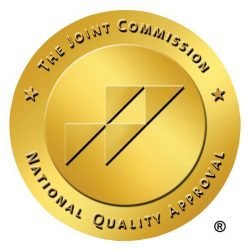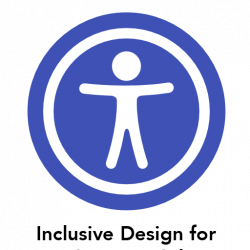Diabulimia Treatment for Adults
Eating disorder treatment programs for adults of all genders struggling with eating disorders and comorbid diabetes.
Reach out to us today!
What is Diabulimia?
The term “diabulimia” is used to describe co-occurring diabetes and eating disorders. Eating disorder-diabetes Mellitus type 1 (ED-DMT1) describes the dual diagnosis of a person struggling with eating disorders and type 1 diabetes. Individuals with diabulimia restrict insulin usage to control their weight and often experience negative body image.
Diabulimia Signs and Symptoms
Diabulimia Warning Signs
- Fear of taking insulin and insulin restriction
- Irregular eating patterns
- Avoidant of sweets and fats
- Gravitate towards “safe foods”
- Avoidant of meals
- Binges + feelings of guilt and fear of weight gain
- Limiting or omitting insulin
- Avoidant of doctor’s appointments
- Untruthful to doctors and family about blood glucose values
- Frequent visits to the emergency room for diabetic ketoacidosis (DKA)
- May voice body image concerns or body dissatisfaction
- May display intense obsession about weight
- Secrecy and/or non-truths about diabetic management
Diabulimia Symptoms
- Early-onset of diabetic medical complications: frequent infections (UTI, yeast, skin, Staph, etc.), deteriorating vision, gastroparesis, neuropathy, renal disease, and cardiovascular complications
- Consistently high hemoglobin A1c levels (range of blood sugars over a 3-month period)
- Frequently omit insulin at mealtimes despite multiple episodes of DKA
- Frequent urination
- Excessive thirst
- Excessive hunger
- Overlapping symptoms of eating disordered behaviors beyond insulin omission: restriction, binging, purging, use of laxatives, and over-exercising
- Extreme lethargy
- May be in a normal body weight, larger body, or underweight (although prior to diagnosis of DMT1, it is common to lose weight)
Diabulimia Treatment Programs for Adults
Alsana’s eating disorder treatment programs provide a soft landing for adults struggling with diabulimia and co-occurring mental health conditions.
Diabulimia treatment is provided by our multidisciplinary, collaborative team of treatment professionals who will walk alongside and support clients regardless of where they are on their recovery journey. Residential and PHP/IOP programs are available in Alabama, California, and Missouri. Virtual PHP/IOP programs are also available to serve clients who are ready to thrive and hone their recovery skills within a less-structured treatment environment.

Whole-Person Approach to Diabulimia Treatment
The objective of Alsana’s diabulimia treatment programming is eating disorder care and stabilization. Alsana incorporates HAES philosophy and weight-neutral goals.
An on-site medical physician will meet with clients 1x/week to review blood glucose trends and modify medications accordingly.
At Alsana, diabulimia treatment emphasizes shame reduction with an emphasis on self-compassion.

All of our programming is built on the foundation of our Adaptive Care Model®, which prescribes an individualized, whole-person care approach for clients recovering from eating disorders and co-occurring conditions. This evidence-based method facilitates multidimensional healing through medical, therapeutic, and nutritional care, as well as through relational and movement support. This whole-person approach to eating disorder treatment helps clients hone the recovery skills needed to sustain recovery post-treatment.

Diabulimia Treatment Team
Treating diabulimia clients requires a collaborative, multi-disciplinary approach. Essential team members include:
- Endocrinologist or diabetologist who is sensitive to the psychological components of the eating disorder
- Registered dietitian and/or certified diabetes care and education specialist (CDCES) with experience with eating disorders
- Psychotherapist with experience with eating disorders
- Nurse
- Medical doctor
- Psychiatrist

Meal modifications will be utilized as necessary to promote blood glucose levels within normal range and will avoid restriction and deprivation at meals.
Movement/activity recommendations to promote blood glucose levels within target range.
Additional self-care behaviors to promote health/glycemic management including but are not limited to: sleep and dental hygiene, hydration, and stress management.
Diabulimia Nutritional Care
During the assessment process, Alsana dietitians gain a thorough understanding of clients’ eating and nourishment challenges and work with our eating disorder-informed culinary team to create custom meal plans that meet diabulimia clients where they are in recovery. Meal modifications are utilized as necessary to promote blood glucose levels within the normal range and avoid dietary restriction and deprivation.
Dietitians also collaborate closely with Alsana’s therapeutic and medical teams to help clients pair fuel groups in a way that stabilizes blood glucose control while also making peace with food.
Our goal is to create food neutrality by taking out the moral judgment of food and focusing on nourishment, flexibility, and pleasure in the nutritional healing process. Learn More About Alsana’s Approach to Nutritional Care ⟶
Alsana’s Diabulimia Nutrition Program
- Weekly nutrition psychoeducation group
- Nutrition education
- Hands-on experientials
- Kitchen skills
- Individualized meal plans
Health Consequences of Diabulimia
The health consequences of co-occurring eating disorders and diabetes are serious and can be life-threatening.
- Hyperglycemia (high blood sugar)
- Electrolyte imbalance
- Menstrual abnormalities in females
- Dehydration
- Gastroparesis
- Peripheral neuropathy (pain, weakness, or numbness in the extremities, such as hands, feet, arms, and legs)
- Impaired vision that can lead to blindness (retinopathy)
- Kidney disease that can lead to kidney failure (nephropathy)
- Heart disease and cardiovascular complications
- Stroke
Understanding and Addressing Diabetes Stigma
Diabetes stigma refers to the negative attitudes, stereotypes, and discrimination that individuals with diabetes may encounter due to their condition. It can manifest in various ways, including social, cultural, and healthcare-related contexts. Diabetes stigma can be harmful because it can lead to emotional distress, hinder self-care, and discourage individuals from seeking appropriate medical treatment and support.
Here are some common aspects of diabetes stigma:
Blame and Judgment: People with diabetes may be unfairly blamed for their condition, with others assuming that it is entirely their fault due to lifestyle choices. This blame can lead to feelings of guilt and shame.
Misconceptions: Misunderstandings about diabetes can contribute to stigma. For example, some may believe that diabetes is solely caused by overeating sugar, which is not accurate. Such misconceptions can lead to judgment and stereotyping.
Discrimination: Discrimination can occur in various settings, such as the workplace, schools, or social interactions. Individuals with diabetes may face discrimination related to their condition, including restrictions on job opportunities or unequal treatment in educational settings.
Social Isolation: The fear of stigma can lead to social isolation. People with diabetes may avoid disclosing their condition to friends or colleagues to avoid potential negative reactions.
Barriers to Healthcare: Stigma can prevent individuals from seeking necessary medical care and adhering to their treatment plans. This can lead to poorer health outcomes.
Emotional Impact: Diabetes stigma can have a profound emotional impact, leading to increased stress, anxiety, and depression among those affected.
The relationship between diabetes and eating disorders is complex and multifaceted. Factors such as the constant focus on food, blood sugar monitoring, and body weight can contribute to the development of disordered eating behaviors in some individuals with diabetes.
Eating Disorders and Diabetes - Statistics
- Diabulimia is shockingly common; as many as a third of women with type 1 diabetes report insulin restriction, with higher levels among those between the ages of 15 and 30.
- 37.3 million people have diabetes (11.3% of the US population)
- New cases: 1.4 million Americans are diagnosed with diabetes every year.
- The mortality rate for diabetes alone is roughly 2.5 percent; anorexia nervosa is 6.5 percent. Individuals with diabulimia face a mortality rate of 34 percent.
Paying for Diabulimia Treatment – Insurance Coverage
Alsana is a preferred in-network provider for all major insurance companies.











Diabulimia Treatment FAQs
Diabulimia is an eating disorder that occurs in people with diabetes, typically type 1, where individuals deliberately reduce or skip insulin doses for weight loss.
Diabetes has a 2.5% annual mortality rate and anorexia nervosa has a 6.5% mortality rate. Diabulimia has a mortality rate of 34.8% annually.
With proper treatment, individuals can recover from diabulimia. Recovery involves managing diabetes effectively while addressing the psychological aspects of the eating disorder.

Related Content and Resources

Begin your recovery journey with Alsana.
*Alsana takes an individualized, whole-person approach to eating disorder treatment, however it is not considered a form of holistic medicine.














